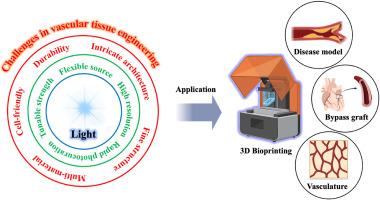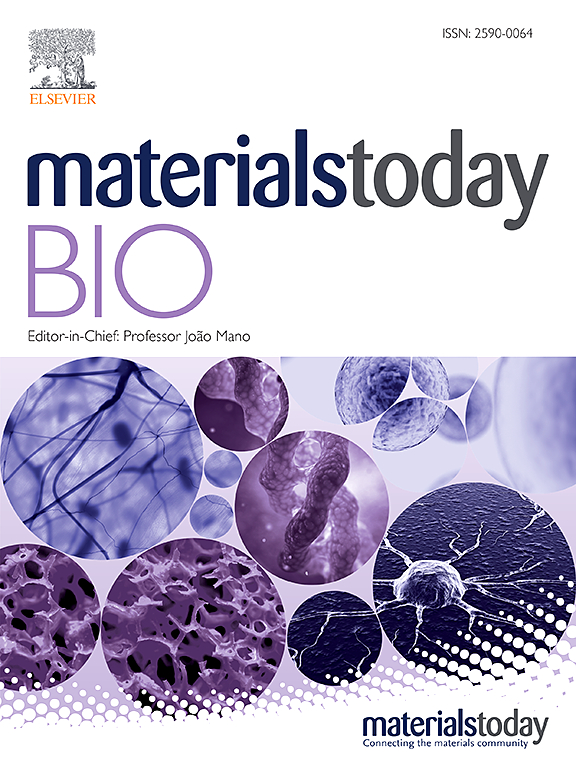Light-based 3D bioprinting techniques for illuminating the advances of vascular tissue engineering
IF 8.7
1区 医学
Q1 ENGINEERING, BIOMEDICAL
引用次数: 0
Abstract
Vascular tissue engineering faces significant challenges in creating in vitro vascular disease models, implantable vascular grafts, and vascularized tissue/organ constructs due to limitations in manufacturing precision, structural complexity, replicating the composited architecture, and mimicking the mechanical properties of natural vessels. Light-based 3D bioprinting, leveraging the unique advantages of light including high resolution, rapid curing, multi-material adaptability, and tunable photochemistry, offers transformative solutions to these obstacles. With the emergence of diverse light-based 3D bioprinting techniques and innovative strategies, the advances in vascular tissue engineering have been significantly accelerated. This review provides an overview of the human vascular system and its physiological functions, followed by an in-depth discussion of advancements in light-based 3D bioprinting, including light-dominated and light-assisted techniques. We explore the application of these technologies in vascular tissue engineering for creating in vitro vascular disease models recapitulating key pathological features, implantable blood vessel grafts, and tissue analogs with the integration of capillary-like vasculatures. Finally, we provide readers with insights into the future perspectives of light-based 3D bioprinting to revolutionize vascular tissue engineering.

用光基三维生物打印技术照亮血管组织工程的发展之路
血管组织工程在创建体外血管疾病模型、植入式血管移植物和血管化组织/器官构建物方面面临着重大挑战,原因是在制造精度、结构复杂性、复制复合结构和模拟天然血管的机械特性方面存在限制。光基三维生物打印利用光的独特优势,包括高分辨率、快速固化、多材料适应性和可调光化学,为这些障碍提供了变革性的解决方案。随着各种光基三维生物打印技术和创新策略的出现,血管组织工程的发展速度明显加快。本综述概述了人体血管系统及其生理功能,随后深入探讨了光基三维生物打印技术的进展,包括光主导技术和光辅助技术。我们探讨了这些技术在血管组织工程中的应用,这些技术可用于创建再现关键病理特征的体外血管疾病模型、可植入的血管移植物以及整合了毛细血管的组织模拟物。最后,我们为读者提供了光基三维生物打印技术的未来展望,以彻底改变血管组织工程学。
本文章由计算机程序翻译,如有差异,请以英文原文为准。
求助全文
约1分钟内获得全文
求助全文
来源期刊

Materials Today Bio
Multiple-
CiteScore
8.30
自引率
4.90%
发文量
303
审稿时长
30 days
期刊介绍:
Materials Today Bio is a multidisciplinary journal that specializes in the intersection between biology and materials science, chemistry, physics, engineering, and medicine. It covers various aspects such as the design and assembly of new structures, their interaction with biological systems, functionalization, bioimaging, therapies, and diagnostics in healthcare. The journal aims to showcase the most significant advancements and discoveries in this field. As part of the Materials Today family, Materials Today Bio provides rigorous peer review, quick decision-making, and high visibility for authors. It is indexed in Scopus, PubMed Central, Emerging Sources, Citation Index (ESCI), and Directory of Open Access Journals (DOAJ).
 求助内容:
求助内容: 应助结果提醒方式:
应助结果提醒方式:


